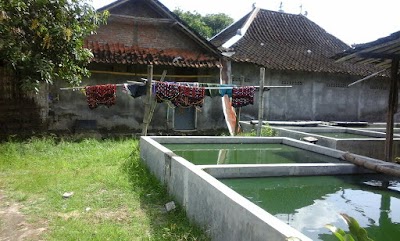Japanese Peace Park (Japanese Peace Park)
Overview
Overview of the Japanese Peace Park
Japanese Peace Park in Wewak, located in the East Sepik province of Papua New Guinea, is a serene and evocative space dedicated to honoring the memory of the Japanese soldiers who lost their lives during World War II. This park stands as a symbol of shared hope for peace and reconciliation, bringing together past adversaries through collective remembrance.
A Collaborative Vision
The creation of the Japanese Peace Park was a joint initiative between the Japanese government and local authorities in Papua New Guinea. It serves to commemorate the thousands of Japanese soldiers who perished during the War in the Pacific, particularly in the campaigns surrounding Wewak, a town that witnessed significant conflict. Many soldiers from both sides lost their lives in this area, making it a poignant location for remembrance.
Establishment and Construction
The park's establishment stemmed from extensive diplomatic discussions and agreements. The Japanese government, along with its embassy and consular offices in Papua New Guinea, worked closely with local government officials and community leaders in East Sepik. Funding for the park came from various sources, including the Japanese government, private donors in Japan, and contributions from Papua New Guinea.
Construction of the Japanese Peace Park began in the early 1980s, with the site chosen for its historical significance, proximity to major battlefields, and natural beauty. Strategically located on a gentle hill overlooking the Bismarck Sea, the park offers a tranquil view that starkly contrasts the area's tumultuous history.
Design and Features
The design of the park was a collaborative effort between Japanese landscape architects and local planners, emphasizing harmony with the natural surroundings while incorporating traditional Japanese design elements. Key features include a central memorial monument, traditional Japanese stone lanterns, and landscaped gardens adorned with both native and Japanese flora.
A striking centerpiece of the park is the stone monument, known as the Peace Memorial. This monument bears inscriptions in both Japanese and Tok Pisin (the local language), commemorating the lives lost during the conflict and advocating for eternal peace. These inscriptions reflect a deep sense of reverence and a collective desire to remember the past while striving for a future free from conflict.
Commemorative Events and Education
Inaugurated in 1981, the Japanese Peace Park has become a significant site for annual commemorative events, attracting visitors from Japan and around the world, as well as locals paying their respects. Each year, memorial services are held, often attended by Japanese dignitaries, war veterans, their families, and community members. These gatherings foster a spirit of reconciliation and mutual respect.
The park also serves as an educational resource, enlightening visitors about the history of World War II in the Pacific and its impact on the region. Informational plaques and guided tours provide insights into the brutal battles that took place, the experiences of the soldiers, and the broader historical context.
A Lasting Legacy
Today, Japanese Peace Park stands as a powerful reminder of the futility of war and the enduring hope for peace. It holds a place of honor and respect in both Japanese and Papua New Guinean cultures, symbolizing the ability of former foes to unite in the spirit of reconciliation and harmony.
Beyond its solemn purpose of remembrance, the park provides a beautiful public space where visitors can reflect on the lessons of history amidst the tranquility of its gardens. Through its existence, the Japanese Peace Park in Wewak continues to promote a message of peace, understanding, and the importance of remembering the past to build a better future.





